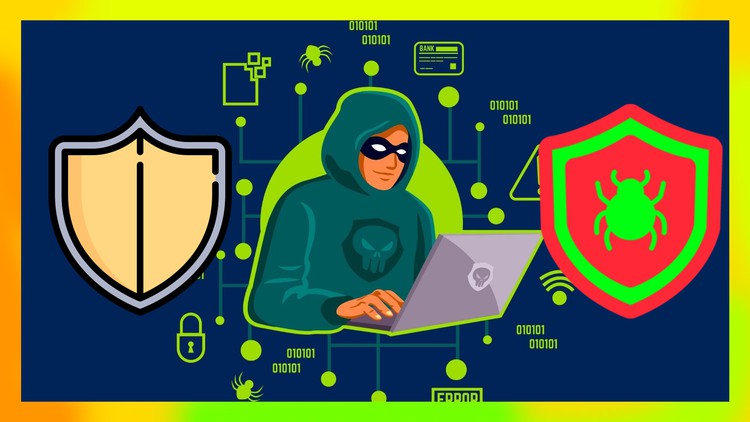
Learn Malware Analysis and Reverse Engineering Deeply with CRMA+ 2022 Course.
What you will learn
Malware Analysis
Reverse Engineering
Linux Fundamentals for Reverse Engineering and Malware Analysis
Networking Fundamentals for Malware Analysis
x32 Reverse Engineering Architecture
Software Reversing for Malware Analysis
Debugging with Immunity Debugger
Software Exploitation
Description
Breaking something down and putting it back together is a process that helps people understand how things were made. A person would be able to redo and reproduce an origami by unfolding it first. Knowing how cars work requires understanding each major and minor mechanical part and their purposes. The complex nature of the human anatomy requires people to understand each and every part of the body. How? By dissecting it. Reverse engineering is a way for us to understand how things were designed, why is it in its state, when it triggers, how it works, and what its purpose is. In effect, the information is used to redesign and improve for better performance and cost. It can even help fix defects.
It is amazing, and rather disconcerting, to realize how much software we run without knowing for sure what it does. We buy software off the shelf in shrink wrapped packages. We run setup utilities that install numerous files, change system settings, delete or disable older versions and superseded utilities, and modify critical registry files. Every time we access a Website, we may invoke or interact with dozens of programs and code segments that are necessary to give us the intended look, feel, and behaviour. We purchase CDs with hundreds of games and utilities or download them as shareware. We exchange useful programs with colleagues and friends when we have tried only a fraction of each program’s features. Then, we download updates and install patches, trusting that the vendors are sure that the changes are correct and complete. We blindly hope that the latest change to each program keeps it compatible with all of the rest of the programs on our system. We rely on much software that we do not understand and do not know very well at all. I refer to a lot more than our desktop or laptop personal computers. The concept of ubiquitous computing, or “software everywhere,” is rapidly putting software control and interconnection in devices throughout our environment. The average automobile now has more lines of software code in its engine controls than were required to land the Apollo astronauts on the Moon.
Malware analysis is the study of malware’s behaviour. The objective of malware analysis is to understand the working of malware and how to detect and eliminate it. It involves analysing the suspect binary in a safe environment to identify its characteristics and functionalities so that better defences can be built to protect an organization’s network.
Imagine if the Trojan Horse was thoroughly inspected and torn down before it was allowed to enter the gates of a city. This would probably cause a few dead soldiers outside the gate fighting for the city. The next time the city is sent another Trojan Horse, archers would know where to point their arrows. And no dead soldiers this time. The same is true for malware analysis—by knowing the behaviours of a certain malware through reverse engineering, the analyst can recommend various safeguards for the network. Think of it as the Trojan Horse being the malware, the analyst being the soldier who initially inspected the horse, and the city being the network of computers.
Content
